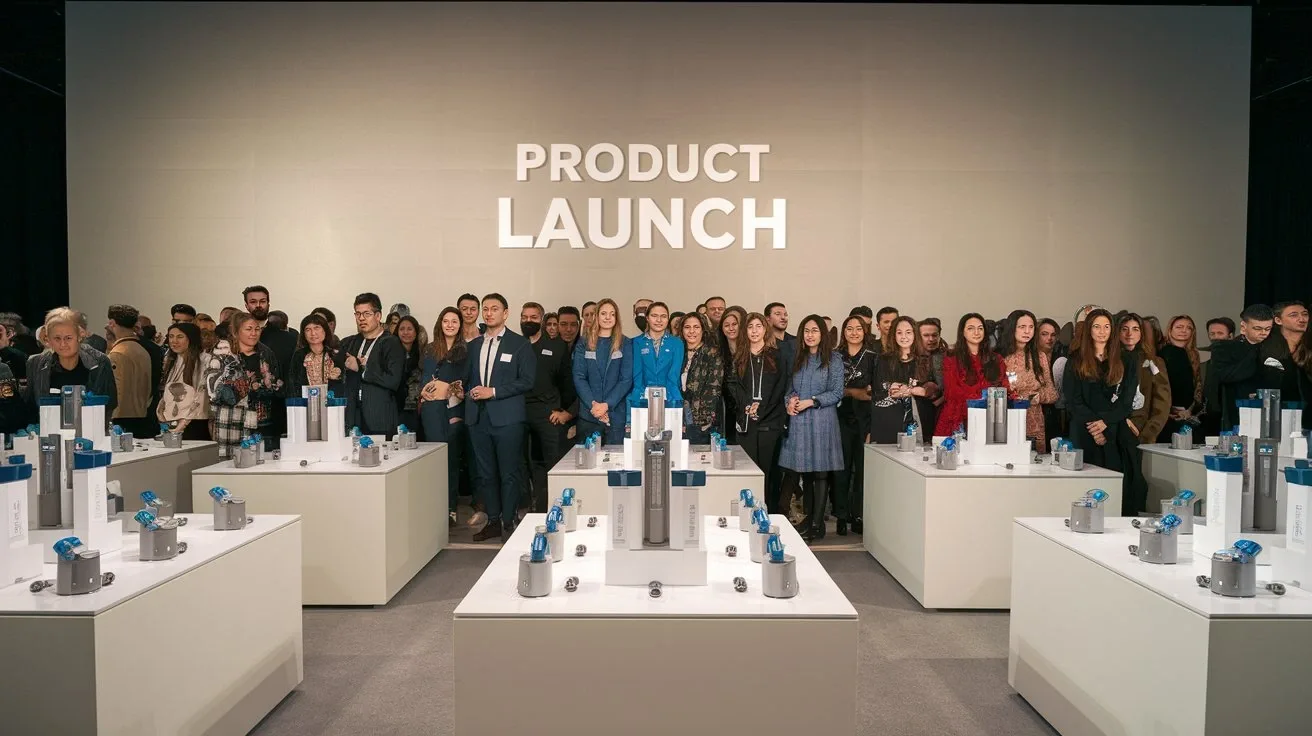Mastering the Art of Product Launch Marketing: A Comprehensive Guide

Mastering the Art of Product Launch Marketing: A Comprehensive Guide
Launching a new product is one of any business's most exciting yet challenging milestones. A well-executed product launch can generate buzz, attract new customers, and establish your product as a market leader. However, a poorly planned launch can lead to missed opportunities and wasted resources.
In this blog, we'll provide a step-by-step guide to product launch marketing, including strategies for pre-launch, launch day, and post-launch efforts. We'll also share examples, tips, and tools to help you create a buzz-worthy campaign.
What is Product Launch Marketing?
Product launch marketing promotes a new product through strategic campaigns and events. It involves generating excitement, educating your audience, and confirming the product reaches customers at the right time.
Why is a Product Launch Strategy Important?
A strong product launch strategy ensures:
- Maximum visibility: Your product reaches the right audience.
- Customer engagement: Builds anticipation and excitement before the launch.
- Competitive edge: Positions your product as a must-have solution.
- Sales growth: Converts excitement into measurable results.
The Phases of a Product Launch
- Pre-Launch Marketing
- Launch Day Activities
- Post-Launch Marketing
1. Pre-Launch Marketing: Building Anticipation
Pre-launch is all about creating excitement and buzz. The goal is to build awareness, educate your audience, and generate anticipation before the product becomes available.
Key Pre-Launch Marketing Activities
- Define Your Target Audience:
- Understand who your product is for and tailor your messaging to meet their needs.
- Develop a Product Launch Timeline:
- Plan every step of your launch with a thorough timeline to stay organized and on track.
- Create Teasers and Hype:
- Share sneak peeks on social media with product launch teasers.
- Use countdowns or mystery posts to build curiosity.
- Build a Landing Page:
- Design a product launch landing page with key details and a sign-up form for early access or updates.
- Include engaging visuals and clear calls to action.
- Engage Your Audience:
- Run polls or quizzes related to the product.
- Send product launch email campaigns to existing subscribers.
- Collaborate with Influencers:
- Partner with influencers to create buzz and reach wider audiences.
- Share behind-the-scenes content to humanize the process.
Example:
Apple often builds massive pre-launch anticipation with teaser videos and exclusive media coverage for its new iPhone models, creating months of excitement before the official release.
2. Product Launch Day: Capturing Attention
Launch day is your opportunity to make a big splash. This is when your product is officially introduced to the market, and every detail counts.
Key Launch Day Activities
- Host a Product Launch Event:
- Arrange a physical or virtual product launch event to showcase your product.
- Use platforms like Zoom or YouTube Live for live-streamed launches.
- Publish a Product Announcement:
- Issue a product launch press release to major media outlets.
- Share the announcement on your blog, social media, and email.
- Go All-In on Social Media:
- Post videos, images, and stories highlighting your product's key features.
- Run product launch social media campaigns with hashtags and interactive content.
- Launch a Product Video:
- A product launch video can demonstrate the product and explain its benefits clearly.
- Share this video across multiple platforms to maximize reach.
Example:
Tesla's product launches are famous for being live-streamed events at which Elon Musk personally demonstrates the features and capabilities of the new product, creating instant buzz.
3. Post-Launch Marketing: Sustaining Momentum
The work doesn't end on launch day. Post-launch marketing ensures continued awareness, engagement, and customer retention.
Key Post-Launch Marketing Activities
- Follow Up with Early Adopters:
- Send thank-you emails to initial customers.
- Please encourage them to share reviews or testimonials.
- Monitor Feedback:
- Use social media listening tools to gather real-time feedback.
- Address any concerns promptly to build trust.
- Run Retargeting Campaigns:
- Target users who visited your website or interacted with your ads but didn't purchase.
- Host Webinars:
- Conduct product launch webinars to educate customers about advanced features and use cases.
- Release Updates and Promotions:
- Keep customers engaged by introducing updates, limited-time offers, or bundled discounts.
Example:
Slack used post-launch marketing to collect feedback from early adopters, fine-tune its product, and continue growing its user base through targeted campaigns and promotions.
Tools and Techniques for Product Launch Marketing
- Email Marketing Platforms: Tools like Mailchimp or HubSpot help you send targeted emails.
- Social Media Schedulers: Use tools like Hootsuite or Buffer to plan your social media campaigns.
- Landing Page Builders: Platforms like Unbounce or Wix make it easy to develop dedicated landing pages.
- Analytics Tools: Google Analytics or SEMrush help measure the success of your launch.
Measuring the Success of a Product Launch
Evaluate your product launch's effectiveness using these metrics:
- Website Traffic: Track how many visitors came to your landing page.
- Sales Performance: Compare actual sales to projected targets.
- Social Media Engagement: Measure likes, shares, comments, and hashtags.
- Customer Feedback: Collect testimonials and reviews to gauge customer satisfaction.
- Media Coverage: Assess the reach and impact of your product announcement.
Case Studies: Iconic Product Launches
1. Airbnb's Launch Campaign
Airbnb focused on community-building by highlighting how its platform connects travellers and hosts. Through engaging storytelling and authentic user-generated content, it created a loyal customer base.
2. Nike's Air Jordan Campaign
Nike partnered with basketball legend Michael Jordan to launch the Air Jordan sneakers, leveraging influencer marketing and exclusivity to create massive demand.
The Future of Product Launch Marketing
The future of product launches is driven by technology and innovation:
- AI and Automation: Personalized recommendations and targeted campaigns powered by AI.
- AR/VR Experiences: Immersive demonstrations using augmented or virtual reality.
- Sustainability: Eco-friendly packaging and ethical practices to appeal to conscious consumers.
- Interactive Content: Gamification and interactive tools to engage audiences more deeply.
Final Words
A successful product launch marketing campaign requires thorough planning, creativity, and a strong understanding of the audience. Combining pre-launch buzz, impactful launch day events, and sustained post-launch marketing can maximize your product's potential and drive long-term success.
Ready to launch your next big product? Follow these steps and let your campaign take off!

